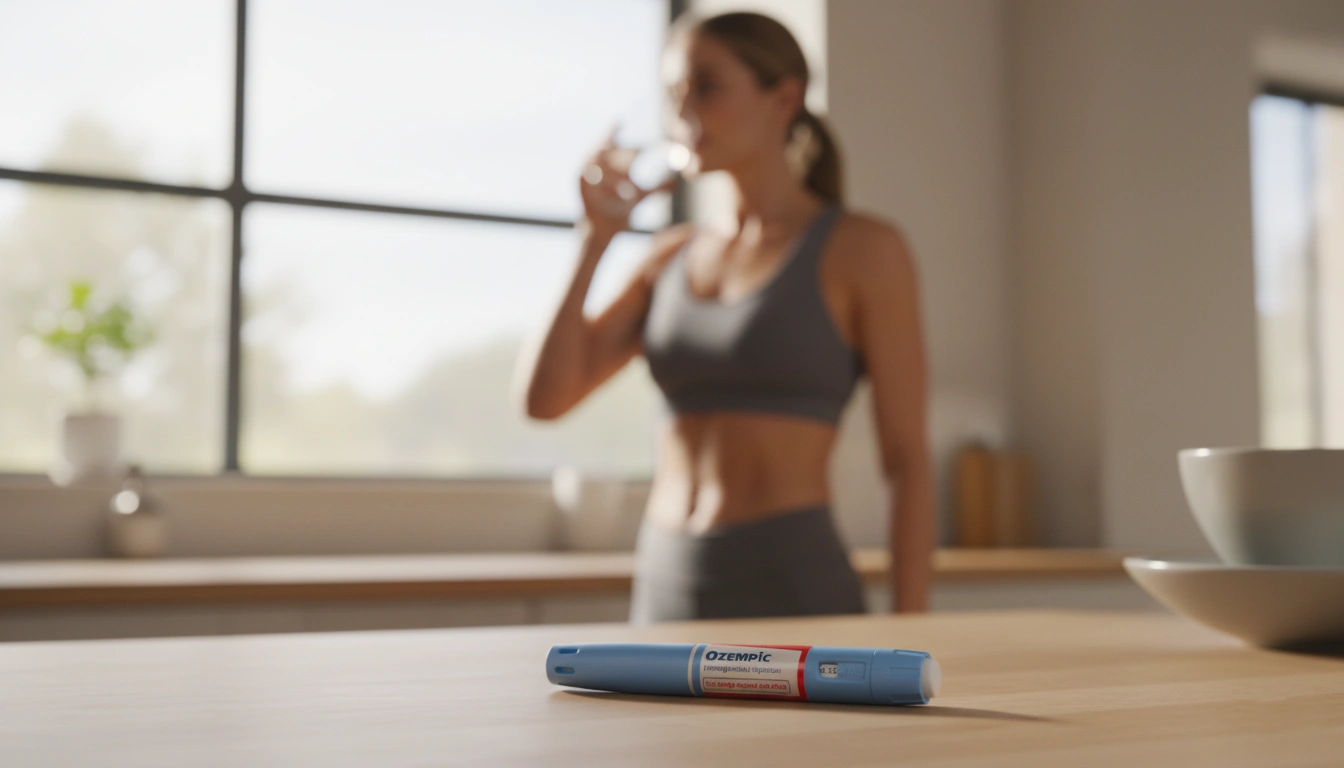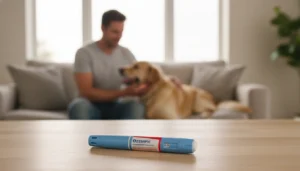What to Eat While Taking Ozempic for Weight Loss

Introduction
Did you know that nearly 70% of adults in the United States are considered overweight or obese? This staggering statistic underscores the growing concern surrounding weight management and the increasing reliance on weight loss medications like Ozempic. Ozempic, a popular medication in the GLP-1 receptor agonist class, is primarily known for its effectiveness in managing type 2 diabetes but has also gained traction as a weight loss tool. As we embark on this exploration of what to eat while taking Ozempic for weight loss, it's crucial to understand the intricacies of this medication and how dietary choices can amplify its benefits.
In this blog post, we will delve into the relationship between Ozempic and diet, providing you with an overview of the best foods to incorporate into your meals, those to avoid, and tips to manage side effects effectively. We aim to empower you with the knowledge needed to navigate your weight loss journey while on this medication, all while reflecting our commitment at TrimRx to safe, effective, and personalized weight loss solutions.
As we progress, we will cover:
- How Ozempic works and its impact on your appetite and digestion.
- The best food categories to include in your diet, emphasizing their nutritional value.
- Foods to avoid to minimize side effects and enhance your weight loss journey.
- Tips for meal planning and creating a balanced diet while taking Ozempic.
- Strategies for managing potential gastrointestinal symptoms.
By the end of this article, you will have a comprehensive understanding of how to optimize your diet while taking Ozempic, transforming your weight loss experience into a more manageable and successful endeavor.
How Ozempic Works and Its Impact on Your Appetite and Digestion
Ozempic, known generically as semaglutide, mimics the effects of a hormone called GLP-1 (glucagon-like peptide-1) that your body naturally produces. This hormone plays a vital role in regulating blood sugar levels and appetite. When you take Ozempic, it helps control blood sugar by stimulating insulin release and slowing gastric emptying, resulting in prolonged feelings of fullness. This dual action not only aids in managing diabetes but also assists in weight loss by reducing overall calorie intake.
However, as beneficial as these effects are, they can lead to some gastrointestinal side effects such as nausea, bloating, and constipation. Understanding how Ozempic interacts with your body can help you make informed dietary choices that mitigate these issues.
The Mechanism of Action
Ozempic works through several mechanisms:
- Appetite Regulation: By signaling satiety, it helps decrease food intake, making you feel full faster.
- Gastric Emptying: Slowing down the rate at which food leaves your stomach helps prolong feelings of fullness but can also lead to discomfort if you consume high-fat or difficult-to-digest foods.
- Blood Sugar Control: It enhances insulin secretion in response to meals, helping to stabilize blood sugar levels.
Implications for Diet
Given these mechanisms, the foods you choose to eat can significantly influence your experience while taking Ozempic. It is essential to focus on nutritional quality while considering how different foods may affect your digestion and overall comfort.
Best Foods to Include in Your Diet While Taking Ozempic
When it comes to what to eat while taking Ozempic for weight loss, focusing on nutrient-dense foods is crucial. Here’s a breakdown of the best food categories to include in your diet:
1. Lean Proteins
Protein is an essential nutrient that not only helps build and repair tissues but also supports muscle mass during weight loss. Including lean protein sources in your meals can help you feel satisfied and maintain muscle health.
Examples of Lean Proteins:
- Skinless chicken breast
- Turkey
- Fish (such as salmon or tilapia)
- Eggs
- Tofu and other plant-based proteins
2. Non-Starchy Vegetables
These vegetables are low in calories and carbohydrates while being high in fiber, making them an excellent choice for anyone looking to manage their weight. They also provide essential vitamins and minerals that support overall health.
Examples of Non-Starchy Vegetables:
- Spinach
- Kale
- Broccoli
- Bell peppers
- Zucchini
3. Whole Grains
Whole grains provide complex carbohydrates that release energy slowly, helping to stabilize blood sugar levels and keep you feeling full longer. They are also high in fiber, which is beneficial for digestive health.
Examples of Whole Grains:
- Quinoa
- Brown rice
- Oats
- Whole-wheat bread
4. Healthy Fats
Incorporating healthy fats into your diet can enhance the absorption of fat-soluble vitamins and promote satiety. However, moderation is key, especially while on Ozempic.
Examples of Healthy Fats:
- Avocados
- Olive oil
- Nuts and seeds (such as almonds and chia seeds)
5. Fruits
While fruits contain natural sugars, they also provide vital nutrients and fiber. Choose fruits that are lower in sugar to avoid spikes in blood sugar levels.
Best Fruits to Consider:
- Berries (strawberries, blueberries, raspberries)
- Apples
- Pears
- Watermelon
By focusing on these food categories, you can create balanced meals that align with the goals of your weight loss journey and support the effects of Ozempic.
Foods to Avoid While Taking Ozempic
While there are many beneficial foods to include in your diet, there are also specific foods that you should avoid or limit to reduce the risk of side effects and enhance your weight loss outcomes:
1. High-Fat Foods
Foods that are high in fat can slow digestion, exacerbating the side effects of Ozempic, such as nausea and discomfort. These foods are also often calorie-dense, making it easy to exceed your daily energy needs.
Foods to Avoid:
- Fried foods
- Greasy snacks
- Fatty cuts of meat
2. Ultra-Processed Foods
Ultra-processed foods are often high in sugars, unhealthy fats, and additives that can disrupt blood sugar control and contribute to weight gain.
Examples:
- Sugary cereals
- Fast food
- Packaged snacks like chips and cookies
3. Sugary Foods and Drinks
Excessive sugar intake can lead to blood sugar spikes and crashes, making it harder to maintain stable energy levels and overall health.
Limit:
- Sodas
- Candy
- Pastries
4. Alcohol
While moderate alcohol consumption may not directly interfere with Ozempic, it can complicate weight loss efforts by adding empty calories and potentially affecting blood sugar levels.
5. High-Glycemic Index Foods
Foods with a high glycemic index can cause rapid increases in blood sugar, which Ozempic aims to manage. These foods can lead to feelings of hunger soon after eating.
Examples:
- White bread
- White rice
- Sugary snacks
By avoiding these foods, you can help your body adjust better to Ozempic and maximize your weight loss potential.
Tips for Meal Planning and Creating a Balanced Diet
As you navigate your dietary choices while on Ozempic, consider the following tips for effective meal planning:
1. Focus on Portion Control
With Ozempic, you may find that you need smaller portions to feel satisfied. Use smaller plates and bowls to help manage portion sizes visually.
2. Plan Your Meals Ahead of Time
Meal planning can help you stay on track with your nutritional goals and reduce the temptation to reach for unhealthy options. Prepare meals in advance and keep healthy snacks readily available.
3. Stay Hydrated
Drinking enough water is essential, especially when taking Ozempic. Staying hydrated can help manage some gastrointestinal side effects and support overall health.
4. Keep a Food Journal
Tracking what you eat can help you identify patterns, recognizing which foods work well for you and which do not. This can assist you in making informed dietary choices.
5. Consult with a Registered Dietitian
Working with a dietitian can provide personalized guidance tailored to your specific needs and preferences. They can help you create meal plans that align with your weight loss goals while considering any side effects you may experience.
Managing Potential Gastrointestinal Symptoms
Gastrointestinal symptoms such as nausea, bloating, and constipation can be common when starting Ozempic. Here are some strategies to help manage these symptoms:
1. Eat Smaller, Frequent Meals
Instead of three large meals, try consuming smaller meals throughout the day. This approach can help reduce the feeling of fullness and minimize discomfort.
2. Choose Bland Foods When Necessary
If you experience nausea, opting for bland, easy-to-digest foods like toast, crackers, or plain rice can help settle your stomach.
3. Stay Upright After Eating
Remaining upright after meals can aid digestion and help prevent discomfort or acid reflux.
4. Increase Fiber Gradually
A diet high in fiber is beneficial for digestive health, but increasing fiber intake too quickly can worsen bloating or gas. Introduce high-fiber foods gradually to give your body time to adjust.
Conclusion
As we have explored, managing your diet while taking Ozempic for weight loss involves making informed choices that align with both the medication's effects and your personal health goals. By focusing on nutrient-dense foods such as lean proteins, non-starchy vegetables, whole grains, and healthy fats, you can create a balanced meal plan that supports your weight loss journey.
At TrimRx, we believe in the power of personalized care and the importance of a well-rounded approach to weight management. If you're considering taking Ozempic or are currently using it, we encourage you to explore our personalized weight loss solutions. Take our free assessment quiz to see if you qualify for our prescription weight loss medications, and explore our quick-access supplements like GLP-1 Daily Support and Weight Loss Boost to complement your journey.
FAQ
What are the best foods to eat while on Ozempic?
The best foods include lean proteins, non-starchy vegetables, whole grains, healthy fats, and lower-sugar fruits. These foods can help stabilize blood sugar and promote satiety.
How can I manage nausea while taking Ozempic?
Eating smaller, more frequent meals, staying upright after meals, and opting for bland foods can help alleviate nausea.
Is there a specific diet I should follow while taking Ozempic?
There is no one-size-fits-all diet; however, focusing on whole, nutrient-dense foods and avoiding high-fat, processed, and sugary items is beneficial.
Can I still enjoy my favorite foods while on Ozempic?
Yes, moderation is key. You can include your favorite foods but should be mindful of portion sizes and frequency.
How can I maximize my weight loss results on Ozempic?
Combining Ozempic with a balanced diet, regular physical activity, and consistent medical oversight can help you achieve optimal weight loss results.

Transforming Lives, One Step at a Time
Keep reading
Skipping an Ozempic Dose: What You Need to Know
Discover what happens if you skip an Ozempic dose. Learn about immediate and long-term effects, plus expert advice on how to get back on track safely. Don’t risk your progress!
Ozempic Dosing: What is the Therapeutic Dose for Type 2 Diabetes Management?
Curious what is the therapeutic dose for Ozempic? Discover how personalized dosing optimizes blood sugar control & weight management. Learn more now!
Navigating Ozempic Dosing: What is the Smallest Dose of Ozempic and Why It Matters
Curious about what is the smallest dose of Ozempic? Learn why 0.25 mg is the starting point, how it works, and its role in a safe, effective weight loss journey. Discover personalized support today!



